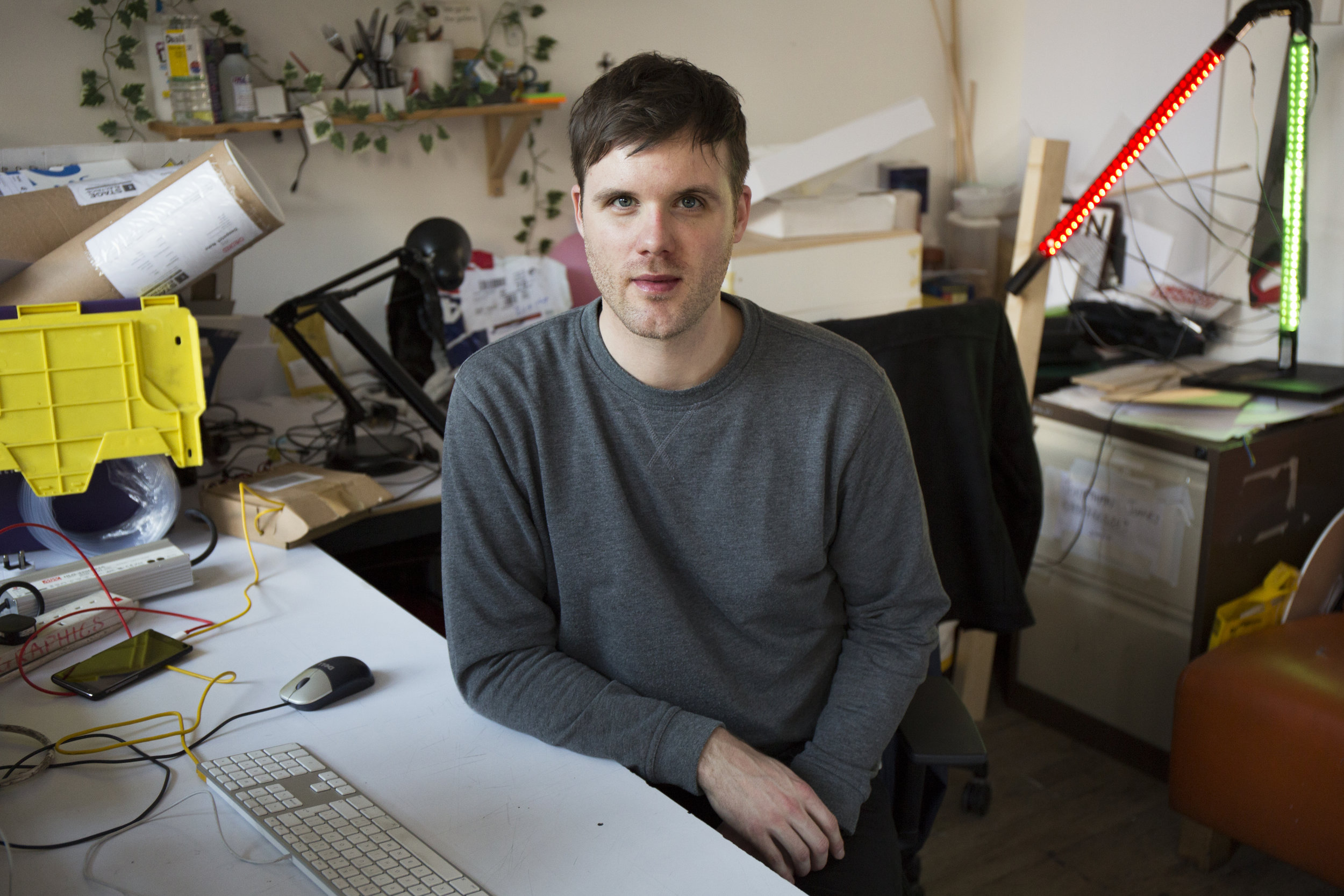Over the past year we worked with a group of students and staff at the world-renowned Royal College of Art in London to develop a series of sonic design experiments, pushing the envelope of sound design and communication.
Learning to Listen: Louis Gauger
Over the past year we worked with a group of students and staff at the world-renowned Royal College of Art in London to develop a series of sonic design experiments, pushing the envelope of sound design and communication. Listen and find out more below. Check out the full collection here.
| CONTRIBUTORS |
| Photos: Clayton Cavender |
Can you tell us something about your background?
I have a background in radio and theatre production. I also hold a degree in musicology, an academic field that has had a big influence on how I perceive the world. Composition as a method and a concept very much permeates the way I approach my work, being it with sound, visuals, or installations.
What inspires you to work with sound?
The process of editing audio clips, especially interviews together into a coherent piece of storytelling is inspiring in itself. Even after all these years, I am fascinated by how you, as an editor and communicator, can induce sensations of spaces and emotions through simple cutting, piecing together, and repeating. Having an audience that engages with my creations is also a great source of inspiration. Getting people to talk, placing a thought in someone’s mind that they might carry with them into the world – that makes the work come full circle. Every time I hear back from one of these people, I am inspired to create new work based on their understanding.
What is the concept behind your project and how did you make it?
For this project, I asked a group of people to finish the simple sentence “skin can be...” Though all interviewees started out with simple words like “warm” and “wet”, over the course of the interview they would go into increasingly bigger abstractions and metaphors, relating the skin not only to inter-human intimacy and distance, but also their own sense of identity and their place in the world around them. One person described skin as being a barrier against both internal and external things: a great reflection for today's world, where the distance between 'me' and 'you', 'us' and 'them' is growing at an alarming rate.
What have you learnt from listening to the world more closely?
With the act of listening in many ways being similar to the act of touch, I am constantly learning new things about how we as humans understand our environments, and through this ourselves via what we hear and the way that this touches us, physically and emotionally. We, as humans, should not underestimate the influence of the real world sound compositions we inhabit, whether it's a forest soundscape or news-coverage on the radio. And we should not underestimate the power we can have by communicating through sound ourselves.





